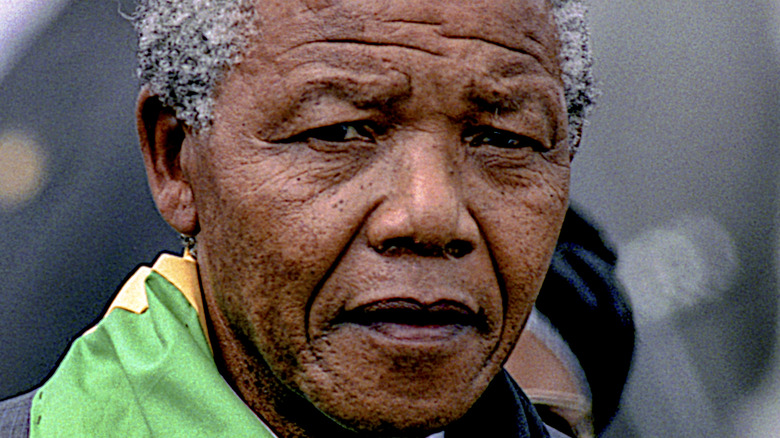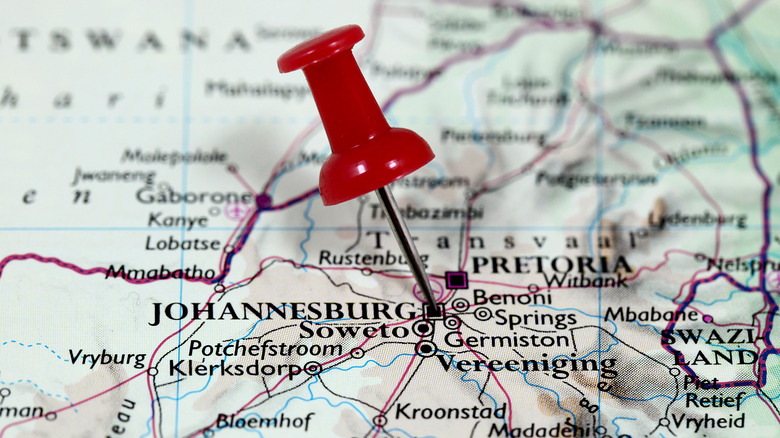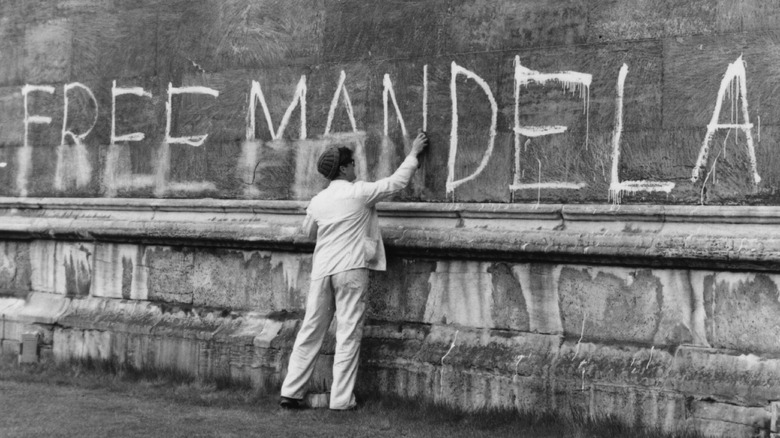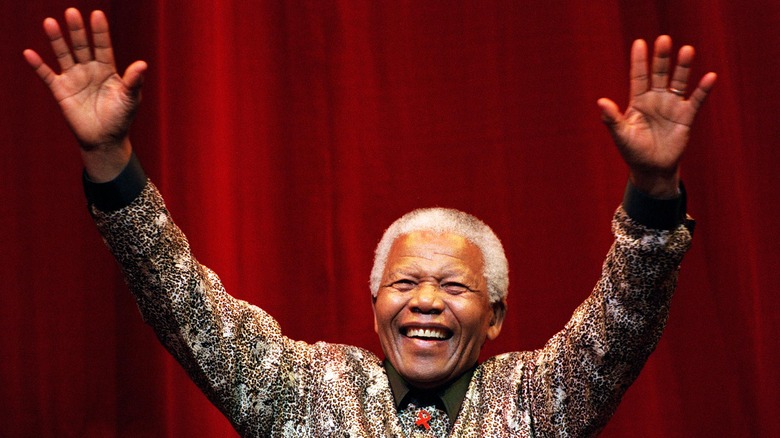The Most Glaring Difference Between The Silverton Siege And Its Movie Depiction
In a suburb of the South African capital city of Pretoria, on the morning of January 25, 1980, members of the Umkhonto we Sizwe, otherwise known as MK, had to act quickly. The MK was the military wing of the African National Congress (ANC), a black nationalist political party formed to push back on South African apartheid policies (per Britannica). What transpired has come to be known as the Silverton Siege. That story is now told in a dramatized Netflix movie of the same name, directed by Mandla Dube (via Netflix).
On that morning in 1980, MK members were on their way to attack oil depots in nearby Mamelodi. When they learned their plan had been discovered, they changed tactics, as CBGist explains.
Whenever true stories are adapted for the screen, some things are changed while some points stay true to history. Here's where the movie "Silverton Siege" diverges from history.
What was the real Silverton Siege?
When they realized they were tailed by the police, MK members scrapped their plan to attack the oil depot, and headed for a Volkskas Bank branch instead. Once there, MK members took 25 hostages, and a six-hour stalemate between the MK and the police ensued. At that point in 1980, the ANC and the MK were banned in South Africa. The group's leader, anti-apartheid and South African civil rights activist Nelson Mandela, had been imprisoned for some 16 years.
The demands of the real MK members at the Volkskas Bank in 1980 were much the same as Netflix represents: R100,000 (about $6,000 in today's money, according to Currency Rate). The outlaw MK militant activists also demanded safe passage to the Mozambique capital, Maputo. Most importantly, though, their stand launched what's known as the Free Mandela movement. That movement would upend the South African social order and eventually contribute to Mandela's release from prison (via CBGist).
What was the Free Mandela Movement?
In addition to money and an escape to Mozambique, the real MK members at Volkskas Bank in 1980 demanded to speak with their state president. Their aim was to negotiate the release of Nelson Mandela and another ANC colleague, named Mange (via South African History Online). In addition to the Volkskas bank standoff, the Free Mandela movement was first adopted within South Africa by the Sunday Post Newspaper, according to the Anti-Apartheid Movement (AAM) website. The Free Mandela movement was also embraced and widely supported in Great Britain.
Helping further the cause, many British cities declared Mandela a freeman, including Glasgow, Scotland. Over time, massively well-attended events like the "Nelson Mandela: Freedom at 70" concert at Wembley Stadium in 1988 helped accomplish the goal. Once released, Mandela thanked the AAM for its support. Most importantly, though, work within South Africa was influenced in no small part by the Silverton Siege. That set the stage for Mandela's eventual release, but also the end of apartheid in democratic South Africa (via AAM).
Did the real Silverton Siege happen like it did in the movie?
On the day that the real Silvertone Siege took place, MK members stormed the Volkskas Bank sometime in the noon hour. Eyewitness testimony varies. The MK members remained focused on the ground floor of the bank, and many people on upper floors managed to escape. The Police Anti-Terrorist Unit was soon on the scene. Shortly thereafter, negotiations began between MK members and the police. By roughly 7 p.m., police made their move. Three MK members as well as two hostages were killed. The injured were rushed to a nearby hospital, according to South African History Online. The siege was over; MK demands were never met.
The Netflix film diverges from what actually happened on a few points in the timeline. In the movie, gunfire erupts much sooner than it did in real life, and the death of two MK members is attributed to in-fighting within the group, when in reality they were likely killed by police. The two civilians killed in the real Silverton Siege also died under much different circumstances. There were also more exits available, through which some people escaped the bank building (via CBGist).
Netflix gave the Silverton Siege a Hollywood ending
The most glaring difference between the Netflix production "Silverton Siege" and what actually happened is in the overall tone of the movie. The Netflix films adds action elements and the feel of a heist movie to the true story. Much less violence occurred in the real Silverton Siege until later on in the day, when the police seized the bank. The names of the MK members were also changed in the script, and some characters were completely made up.
Although pivotal in the development and eventual success of the Free Mandela movement, the Netflix film also presents the Silverton Siege as a much more clear-cut starting point for Nelson Mandela's release. In truth, some trace of the movement existed prior to the true-to-life standoff (via South African History Online). Director Mandla Dube told Pulse that he had bigger themes in mind when he directed the movie. "The film was very intentional as we considered how do we give young people access in the mind, to go out there and grab it, go for it and internalize what freedom means to them ... to be able to question their leaders and demand a change," Dube said.




